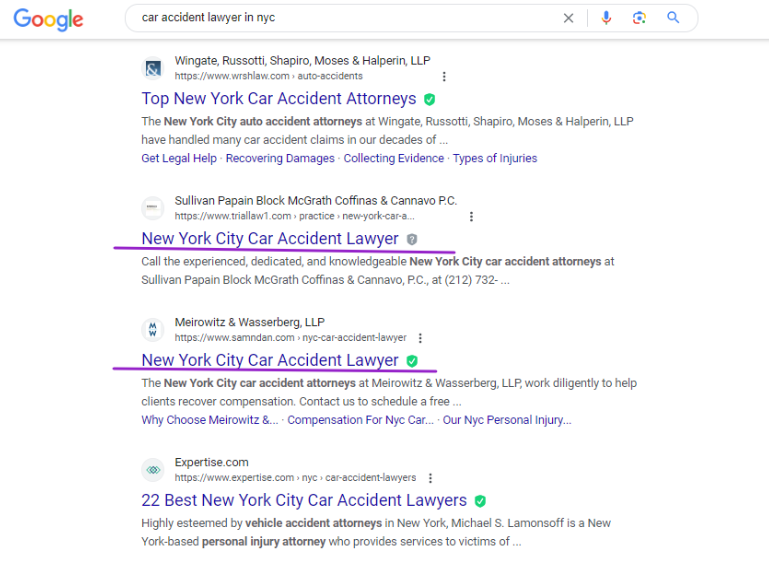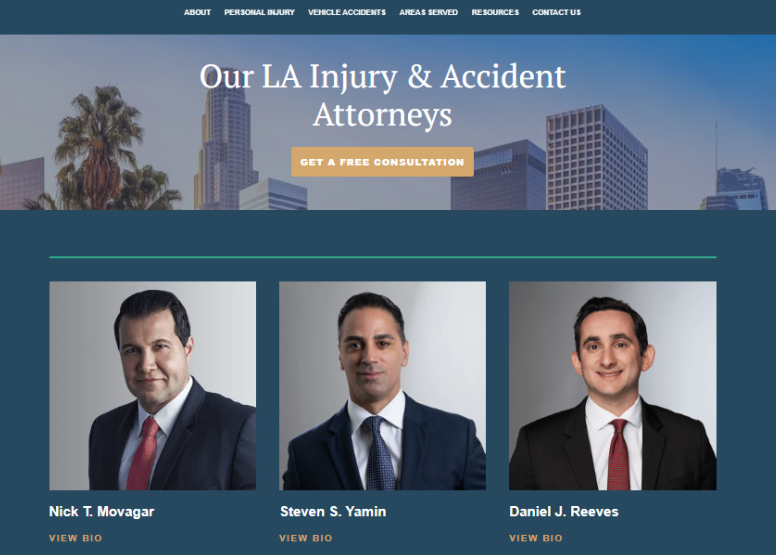10 Best Practices to Optimize Your Local Landing Pages
Businesses with physical locations that offer services through multiple cities or towns must create landing pages for each city or town. Visiting a location landing page will help search engines and potential customers learn more about your local business, its benefits, offerings, service details, and products.
Optimizing your website for local SEO is a great way to increase your rankings and visibility. Your business can appear higher in search results once a consumer looks for a brand related to your business with a specific location.
Location pages include PPC ads, online directory landing pages, a Google Business Profile URL, or email. If you get it right, these pages can help you build credibility and authority for your business in local communities and areas you serve.
This article will discover best practices and tips to improve your local landing pages and increase your rankings correctly. Let’s dive in more details.
10 Ways to Optimize Your Local Landing Pages
Following these recommendations can make optimizing local landing pages for multiple business locations easier than expected.
1. Use Local Keywords
Many online businesses should benefit from local SEO to offer products or services and reach consumers in a particular location. A verified strategy for achieving success in local marketing involves integrating pertinent local keywords into your website’s content.
Adding local keywords to your headings, titles, meta descriptions, and body content can increase your visibility and credibility among regional audiences. It also allows search engines to understand your business and its regional presence.
If you want search engines to understand the content of your local web pages correctly, then focus on title tags. It’s important to remember that space is limited, as Google only indexes the first 50 to 60 characters. For title tags on local landing pages, including your brand name, location, and a targeted keyword is recommended.
- If your business name contains a keyword, there is no need to repeat it. “My Law Company in Los Angeles, CA.”

- If it doesn’t, add the keyword separately: “Rosenbaum & Rosenbaum — Personal Injury Lawyer in NYC.”
Optimizing your website’s ranking and attracting a local target audience to your business is possible by integrating geo-specific and industry-targeted terminology, which helps build stronger relationships with your target audience.
Consider what your customers want to find your business: “personal injury lawyer in Los Angeles” or “Best law firms in NYC.” Ensure that your landing page title tag accurately reflects the purpose or intent of the page and is free of any spelling, grammar, or punctuation errors.

2. Optimize URLs and Images
It’s important to avoid using landing page URLs with a UTM code like www.site.com/pasadena%30, as it can negatively impact the ranking of your local landing page. To improve your search ranking, having a clean URL that uses natural language and is easy for humans to read is crucial.
Here are some SEO best practices you should consider while optimizing your URLs:
- Shorten URLs when possible, but you can include a product or service and a city like that:

- Build a proper URL structure using hyphens for word separation and avoiding uppercase letters, numbers, and other special characters.
- Avoid using “index.html” on the homepage of a website.
- Ensure that all URLs on your website adhere to the usability standards Google sets.
Ensure that all images are SEO-friendly. Don’t just upload photos with gibberish file names from your smartphone. To make your images more meaningful, it’s essential to rename each one based on its content and include the city name if applicable.
Use hyphens to separate the words in the image name. For example, if you upload an image of a criminal lawyer in NYC, rename the file to “criminal-lawyer-nyc.png.”

When you add an image to a web page using WordPress, it usually creates a title tag using the image’s filename. However, it is often necessary to enter the alt text manually as it is frequently left blank. So, add alt tags that accurately describe the image, using relevant keywords and city names.
3. Avoid Duplicate Content
With the advent of Google SpamBrain and its latest content update, every web page must have unique and genuinely informative content. Mere alterations like replacing the name of a city or modifying a few pictures won’t suffice. According to John Mueller of Google, landing pages with duplicated content may be deemed doorway pages, which is strictly against Google’s guidelines.
Creating unique content for each local landing page is vital if your business has multiple locations or service areas. For example, Google will consider an H1 tag like “Best Criminal Defense Lawyers in NYC ” a big red flag, especially if you have other local pages with the same content. It would be better to create an H1 tag like “How to Choose the Right Criminal Defense Lawyer in New York City.”
Creating such local pages is unnecessary to get high rankings in local search results. To develop valuable location pages, you must invest time in creating worthwhile content. Ensure to create content that explains the benefits of your services or products for a particular location and actionable tips on how they work the best.
4. Improve Your NAP Consistency
Local landing pages serve as the visiting cards for your local business, enabling consumers to access the information they need quickly. Your local landing page data must match your Google Business Profile and other local listings to ensure clarity among Google’s search index and your users. Any discrepancies may lead to inaccurate information being presented to your potential customers.

It is essential to include your name, phone number, physical address, and working hours on your website. Using the proper schema markup allows search engines to better understand your website’s content and improves the chances of your content being indexed for voice search.
When using schema markup, including the appropriate type, such as “telephone,” for a business phone number is important. Google’s Structured Data Markup Helper is a helpful tool for beginners. Double-check if all the addresses, phone numbers, and working hours are current to ensure you provide correct information to your customers and search engines.
5. Add Real Photos of Your Business
It’s becoming increasingly challenging for businesses to gain the trust of their local customers. To establish your business as reliable, consider adding original photos of your service vehicles or employees near recognizable landmarks or while grabbing a bite at a local eatery. It’s vital to avoid using stock photos of generic buildings or monuments.

Personalize your page with images that showcase your team and business. You can include pictures of satisfied customers or past projects and optimize them for search engines by using relevant local keywords in file names and alt tags.
6. Optimize for Mobile
According to this research, 57% of customers won’t recommend a local business that has a poor design and is not optimized for mobile. So, Google’s “mobile-first” index may treat the mobile site as primary for search indexing.
To provide a better user experience, optimizing your local landing pages for mobile devices is crucial. It is recommended to have responsive and fast-loading websites that work well on both iOS and Android phones. However, don’t solely focus on responsiveness. Testing your web pages on both platforms and making specific changes to enhance the overall user experience is essential.
Here are some tips for improving your UX:
- Make sure to use the readable text size for mobile users.
- Ensure that the page content formats itself neatly within the phone screen.
- Make sure that navigation tools are designed to meet the needs of mobile users.
You can use Google’s Mobile-Friendly Test page to determine your website is mobile-friendly. It’s a quick and easy way to check if your website is optimized for mobile devices.
7. Improve Website Speed Load
Fast website load times are crucial for retaining customers. Users expect instant access to content and will leave if a website loads slowly on mobile or desktop.
Optimize your local landing pages for faster load times. Ensure to compress images, cache web pages, and reduce redirects. Use Google PageSpeed Insights for measuring the loading time of your web pages. It is a valuable resource for gauging your site’s speed and recommending improvements.

8. Write Location-Specific Content about Your Business
The content of your landing page plays a crucial role in achieving success with local SEO. Use location-specific keywords in the text, including your city and state. Adding information about your business’s history in that specific location and highlighting your community involvement can be beneficial.
You should explore ways to add location-specific content, such as information about your business’ community involvement, showing past projects in the area, and critical team members who serve that area.
For example, you can create content with “Before” and “After” images optimized for your target keyword and the city. It is actually for house cleaning, home repair, and remodeling contractors, where customers can see the results and benefits of your local business.

Another way to tell more about your local business is to use work examples and case studies on each local page. Feel free to get creative with your city-specific content when creating local landing pages. Incorporate targeted keywords and city names naturally.
9. Incorporate Reviews and Testimonials
Including customer reviews from the target local area on your landing page is important. When adding reviews, include the customer’s name, review, star rating, and location where they bought your product or service.
User-generated content (UGC) is vital for consumers when deciding which company to do business with. Integrating positive customer reviews and testimonials from Google, Facebook, or Yelp on your local landing pages is essential.
You can create an easy-to-use system for customers visiting the brand’s local listings to leave reviews. Ensure to update your location pages with the recent positive reviews from the last three months. When showcasing reviews from past clients, include a phone number as a point of contact for trust.

10. Embed a Google Map
Along with your physical address, an embedded map can help you locate and navigate to your desired business. Users can quickly obtain driving directions, and the embedded map displays the brand and review stars, improving conversions.
You can undoubtedly benefit from Google Maps if you have a local business. Make sure that you have a well-optimized Google Business Profile before doing that.

Bottom Line
These practices for optimizing your local landing pages can’t guarantee top rankings in search results. But it can give you a framework to collect valuable information, build an effective strategy, and take your location pages to the next level.
Executing every step to optimize local landing pages and see the rewards of better visibility on SERPs can take time and effort. Remain patient and keep your fingers crossed till the final results.




